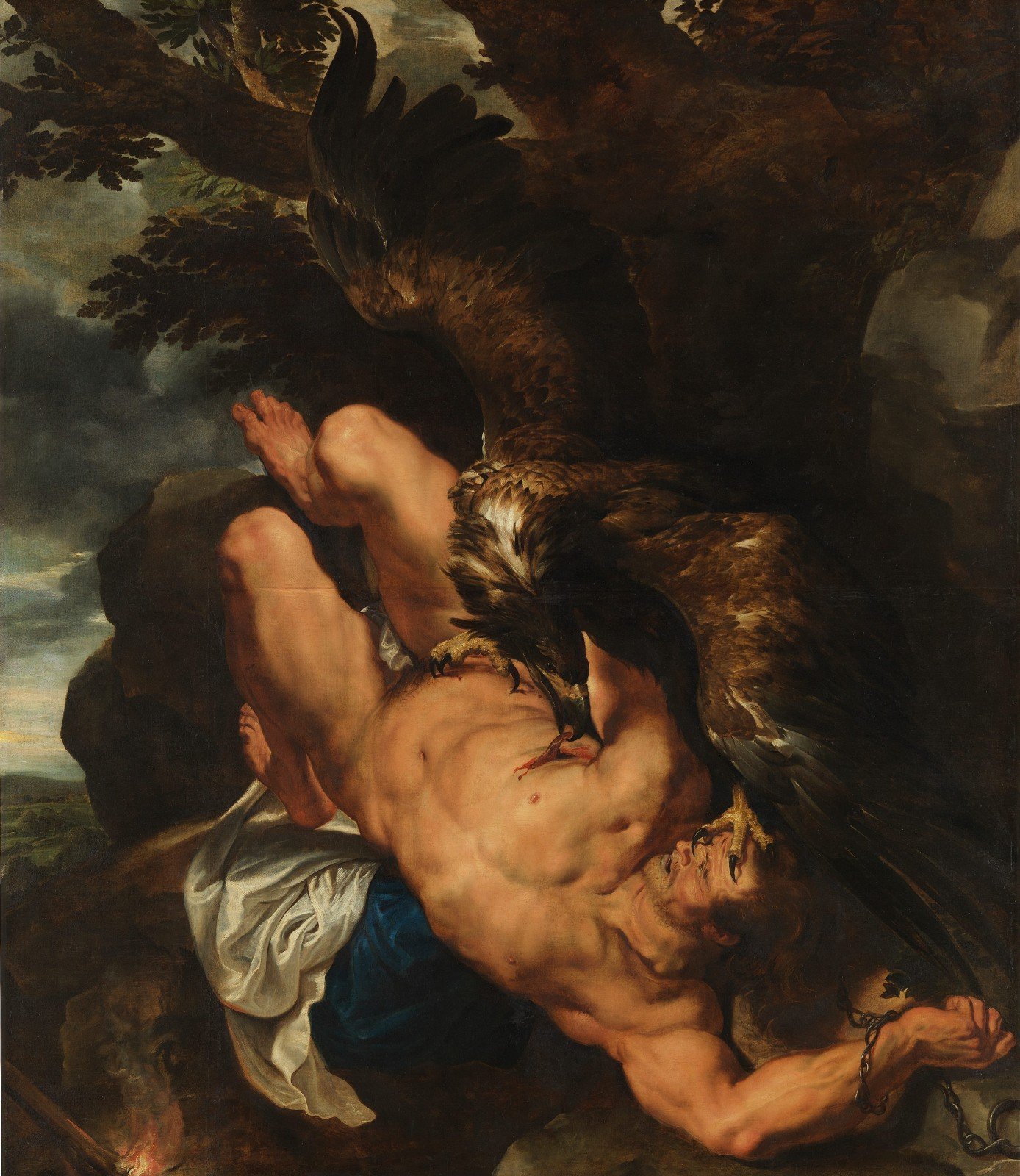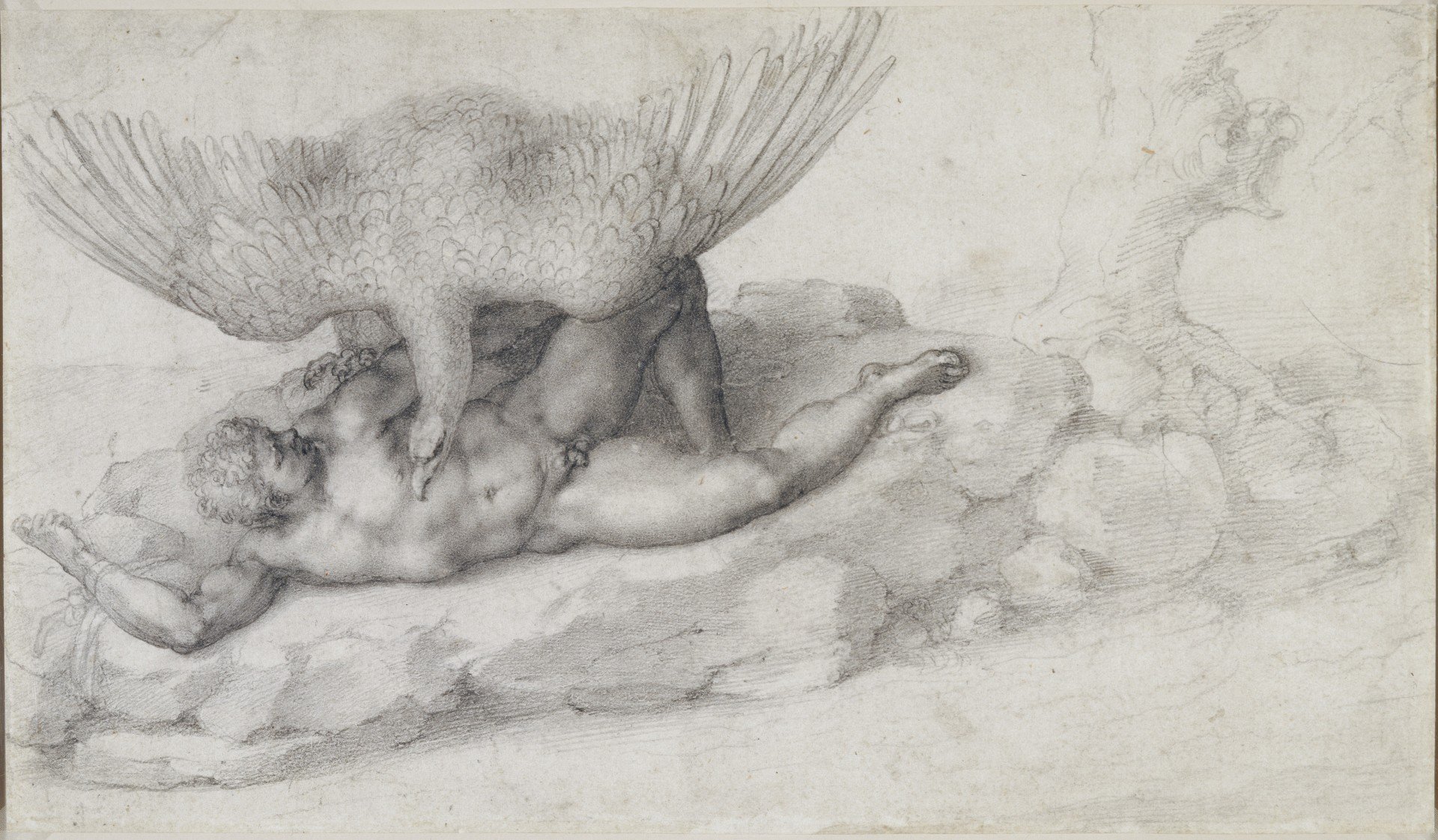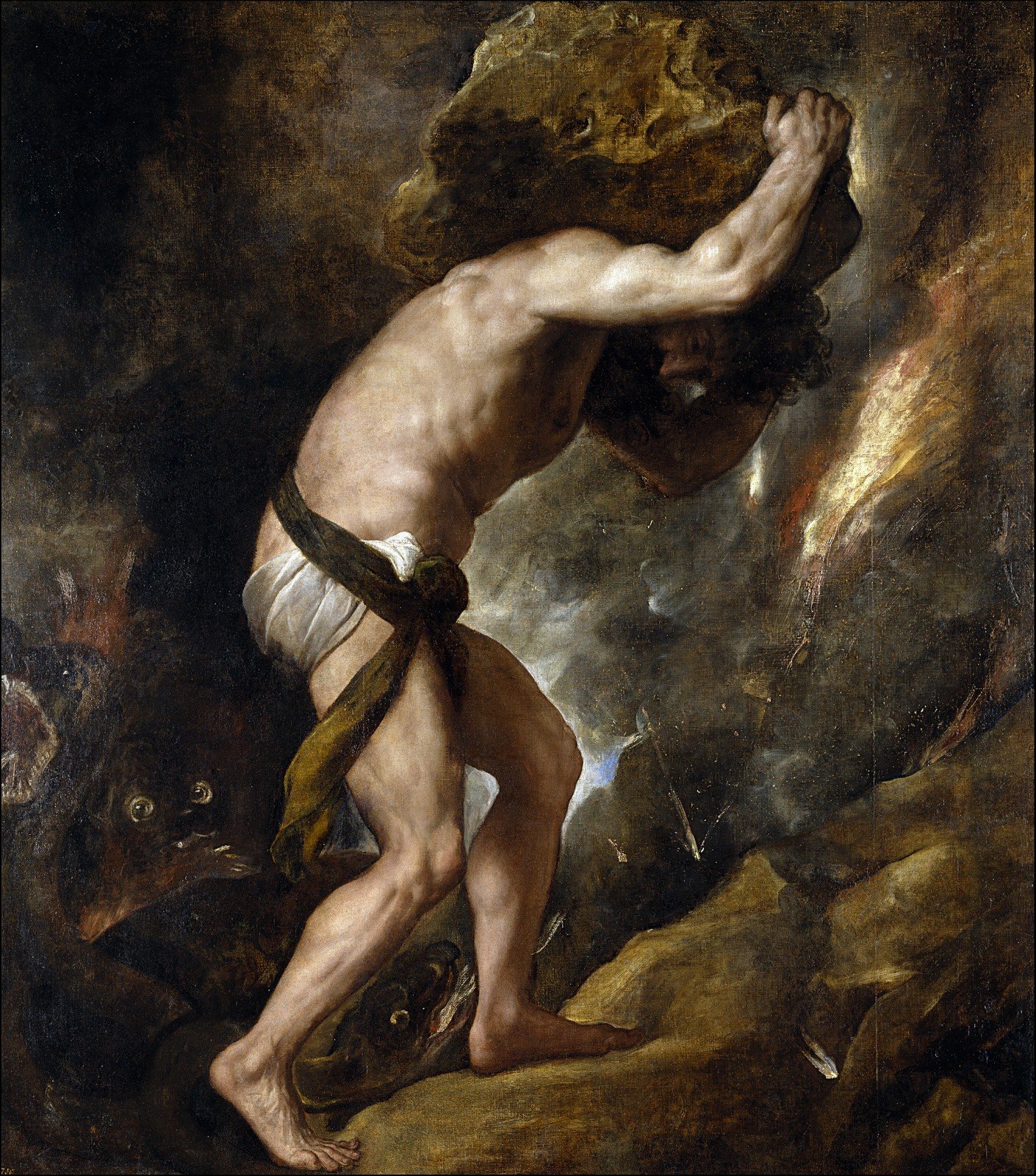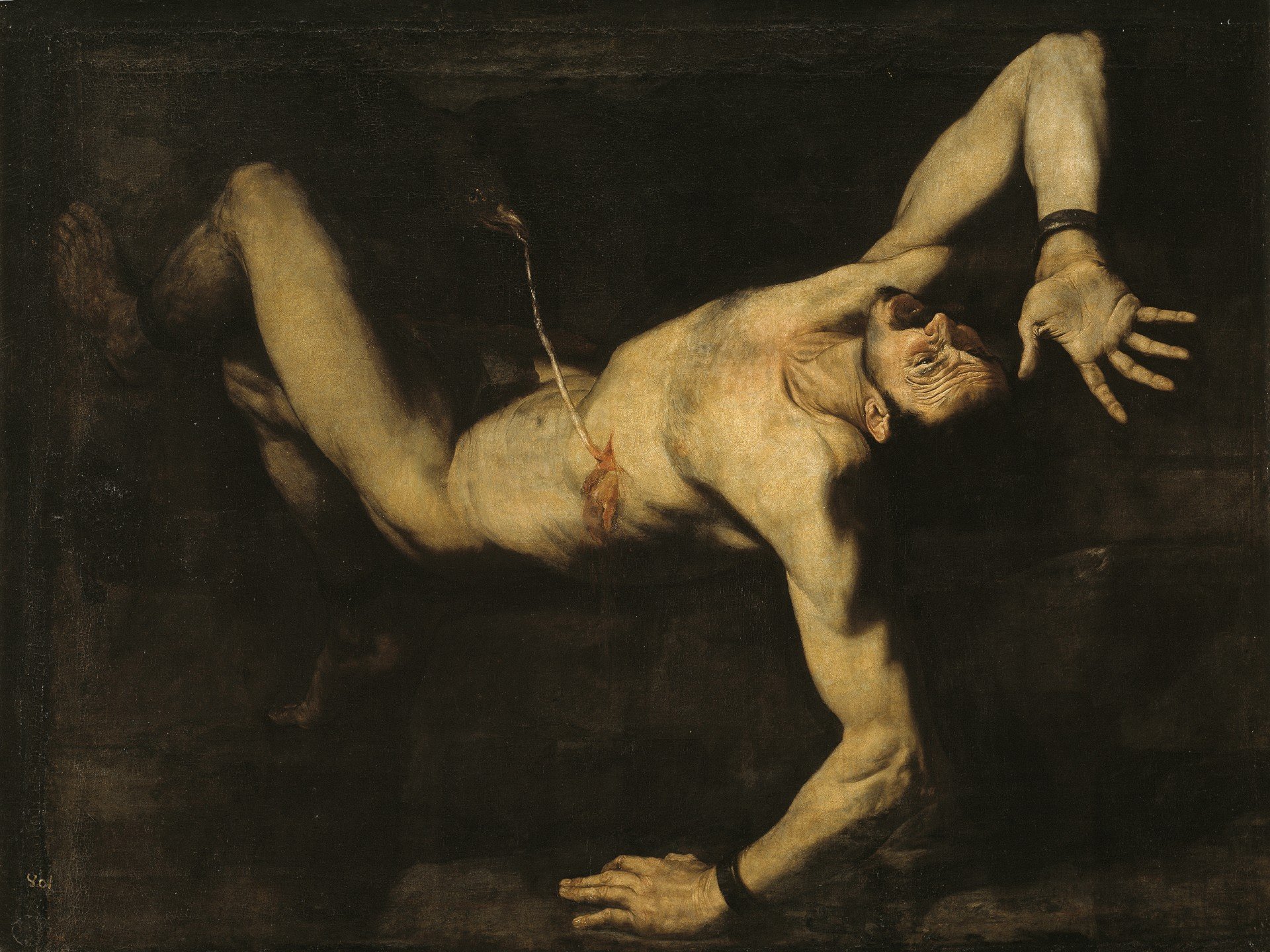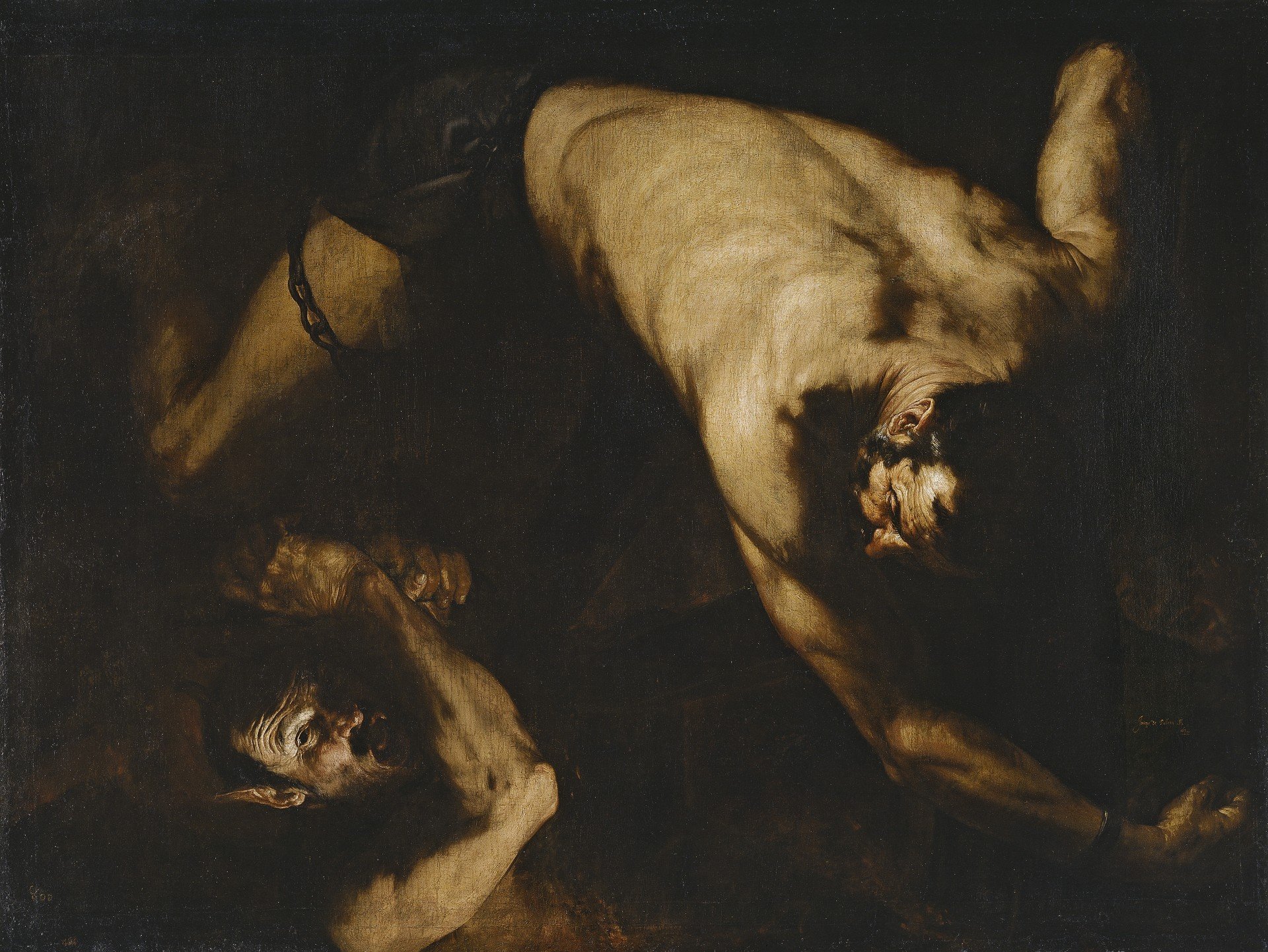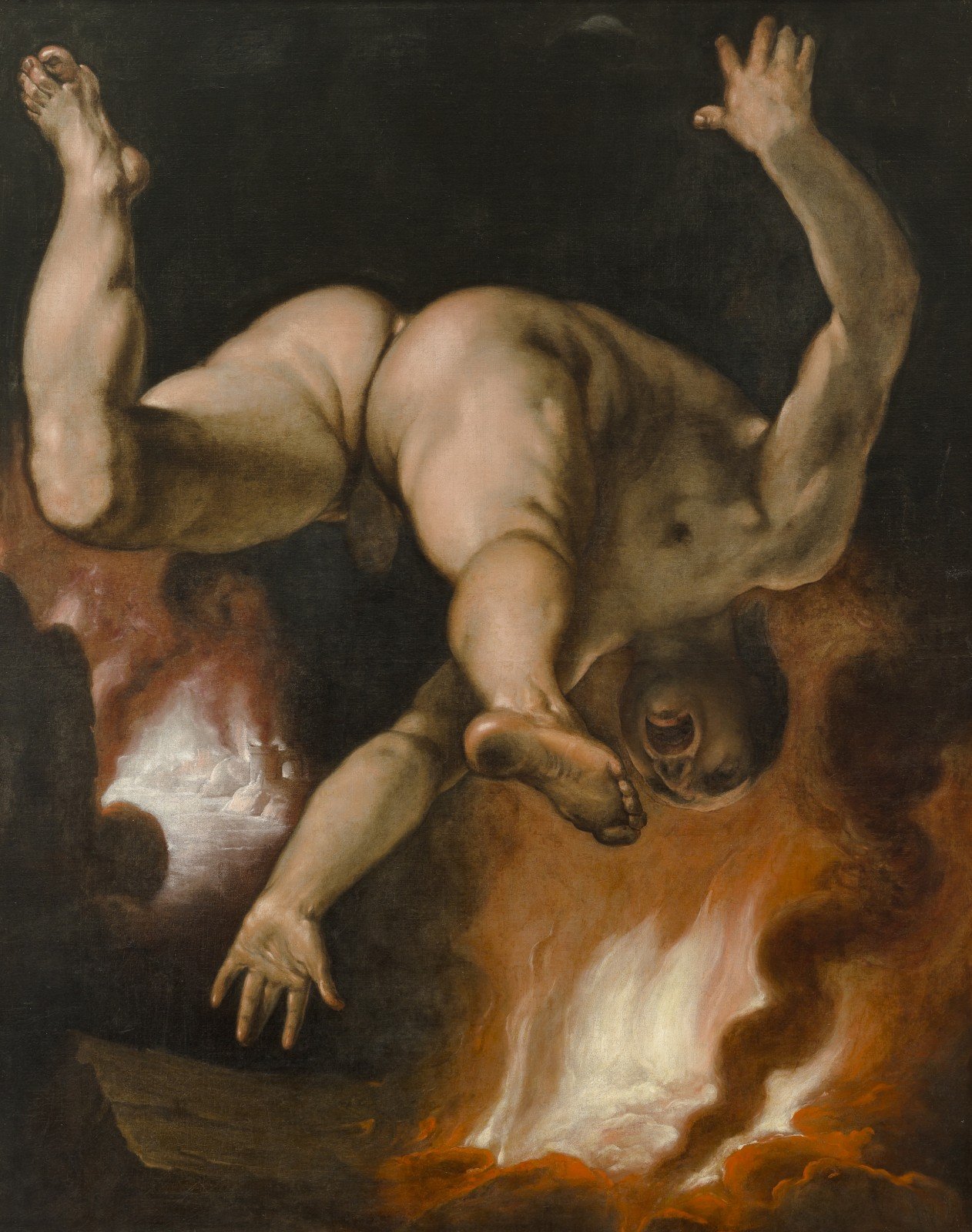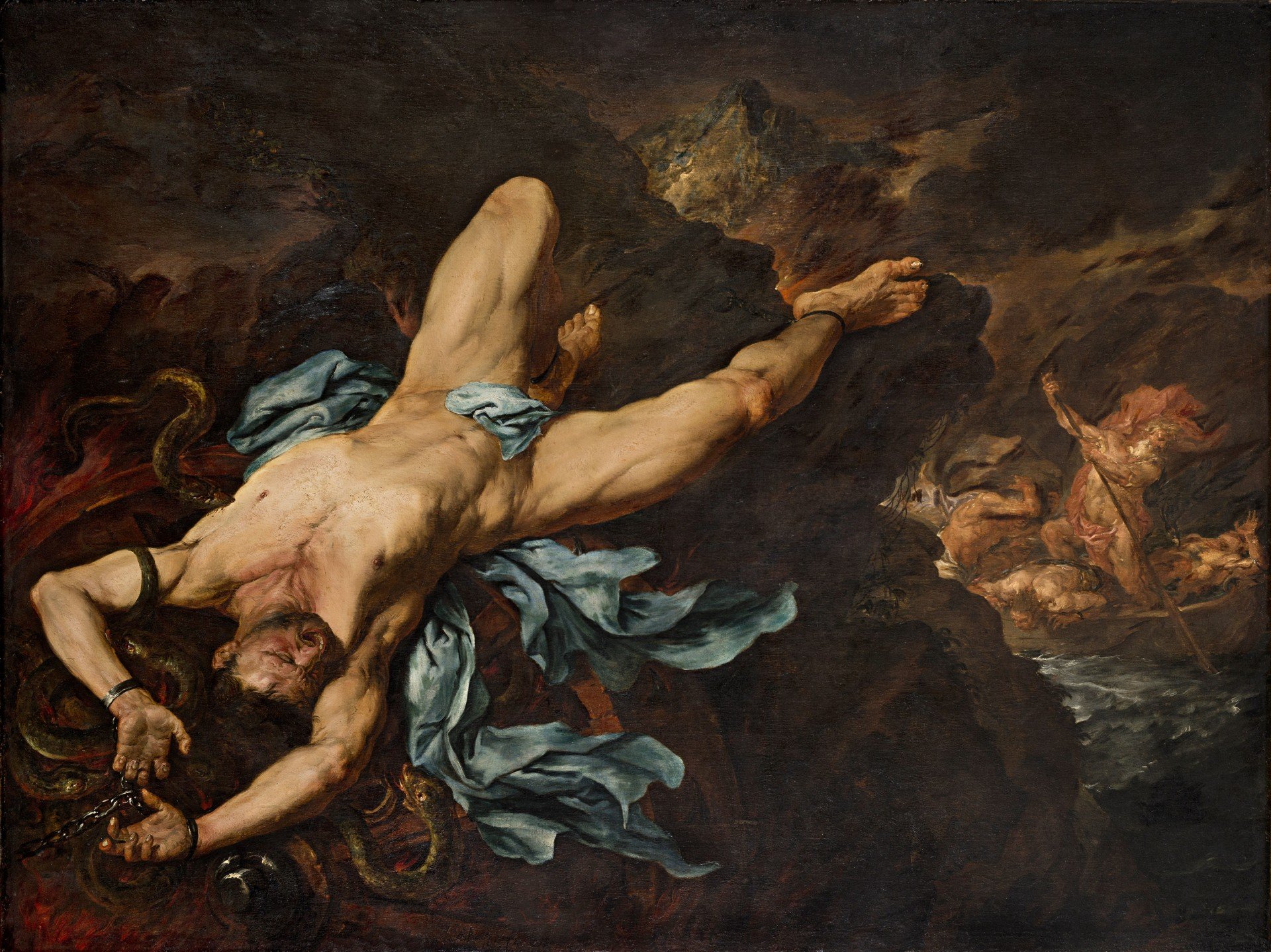The revenge of the Body Art stems from Tiziano and Ribera (now at the Prado)
- “Prometheus Bound”, Rubens and Frans Snyders, Oil on canvas, 242.6 x 209.5 cm, c. 1611, Philadelphia, Philadelphia Museum of Art
- “Tityus”, Michelangelo Buonarroti, Charcoal and black chalk on paper, 33 x 19 cm, 1532, London, Royal Collection Trust / ©Her Majesty Queen Elizabeth II 2014
- “Sisyphus”, Titian, Oil on canvas, 237 x 216 cm, Madrid, Museo Nacional del Prado
- “Tityus”, Titian, Oil on canvas, 253 x 217 cm, Madrid, Museo Nacional del Prado
- “Tityus”, José de Ribera, Oil on canvas, 227 x 301 cm, 1632 Madrid, Museo Nacional del Prado
- “Ixion”, José de Ribera, Oil on canvas, 220 x 301 cm, 1632, Madrid, Museo Nacional del Prado
- “Ixion”, Cornelisz van Haarlem, Oil on canvas, 192 x 152 cm, 1588, Rotterdam, Museum Boijmans van Beuningen
- “The Punishment of Prometheus”, Salvator Rosa, Oil on canvas, 344 x 212 cm, 1648-1650, Galeria Nazionale d ́Arte Antica Palazzo Corsini
- “Ixion”, Giovanni Battista Langetti, Oil on canvas, 193.6 x 258.4 cm, Puerto Rico, Museo de Arte de Ponce
At the Museo Nacional del Prado, until 4 May, you can visit the show “The Furias. From Titian to Ribera”, featuring masterpieces of the sixteenth century related to the subject of condemnation and punishment: a theme that has traced the history of art, but only that contemporary art has occurred in a systematic way.
The exhibition’s title is rather ambiguous. The Furies, to be precise, were female characters in the Roman mythology who personified the punishment and the revenge. They were responsible for making sure that convicts in Hades would actually suffer their punishment. In Spain, however, the name “Furias” was used to name four figures who, after defying the gods, were condemned to live in the greek-roman Hades. The four characters, Tom, Tantalus, Sisyphus, and Ixion, made their first apparition as a group in art in 1548, when Titian was commissioned by Mary of Hungary to paint the “Furias” in four different paintings which she intended to give a political meaning to, that is the representation of the German princes who had rebelled against his brother, the Emperor Charles V. In Spain, from the sixteenth century onward, the term was then applied to first describe the paintings by Titian (Dude, Ixion, Tantalus and Sisyphus), subsequently to indicate the subject in general, even in the works by other artists.
Since the end of ‘600, the theme of condemnation and punishment continued to be present in the history of art, but it did so through different subjects and in a discontinuous manner. Francisco Goya, for example, has painted dozens of scenes with the tragic and horror. Several artists have represented between ‘800 and ‘900 sentences inflicted on the innocent. Some Symbolists of the nineteenth century have investigated nightmares and feelings of guilt. But, in general, beyond the specific cases, the artists have not considered, in such an obsessive manner, the topics of condemnation and guilt. To witness a return of those issues, (in a rather different context, of course) we have to wait the experiences of Body Art in the last century. From a thematic and conceptual point of view, it appears that the closest relationship between the works on display at the Prado and the art of later centuries can indeed be traced in Body Art. In both cases, the body is the subject of the work (at the time of Titian the body was pictorially represented; in the contemporary body art is actually presented). In both cases there is the issue of pain, inflicted and shown. And in both cases there is the transformation of the body due to this pain.
Take Tityus (in the work by Titian, for example), whose liver was constantly pecked at by a vulture for attempting to rape one of Zeus’s lovers. You will hear its echo in the works by Hermann Nitsch, in which he disembowels dead animals and then sprinkles the bodies of his assistants with blood and guts. Or take Prometheus, punished for stealing fire from the gods, and then donate it to humanity: to paint it, Rubens emphasizes his pain and the extreme cruelty of the condemnation by deforming the face and contracting the body. At a distance of over 400 years, Gina Pane injures herself with rose thorns, blades, or rolling on the glass to denounce the sexist conception of women.
However, while the faults of the Furies were of having betrayed the gods, those mentioned by Body Art are imposed (or self-inflicted) for having betrayed (denounced) the conformism of the contemporary society. That is indeed the new God.
July 18, 2015

